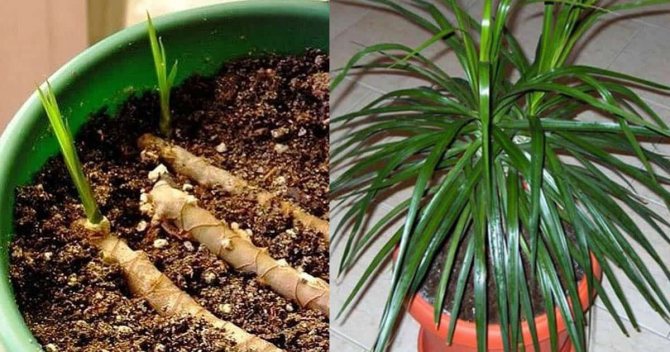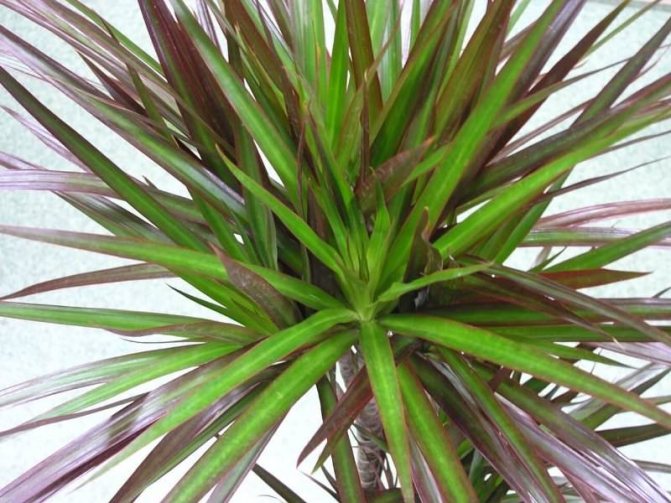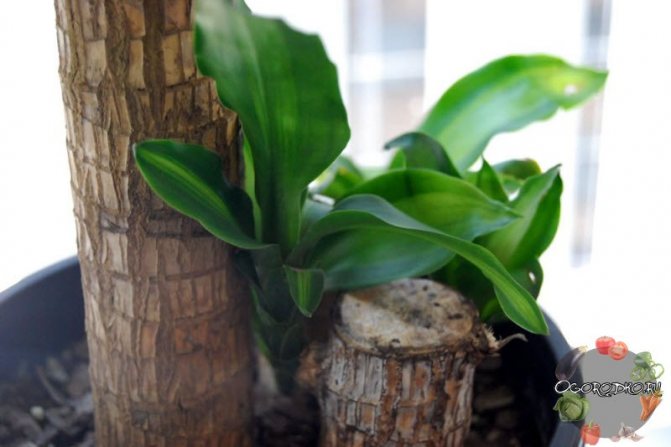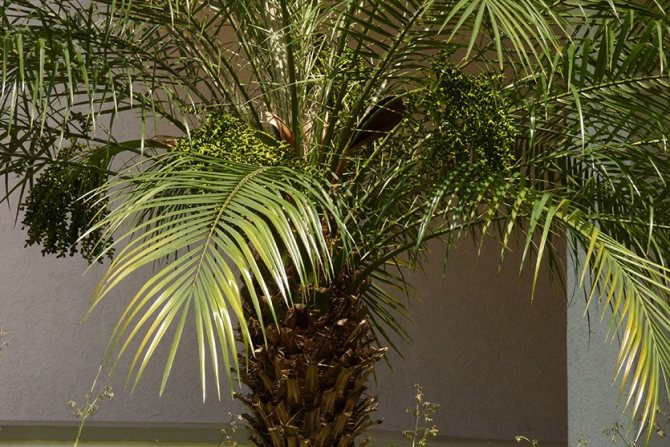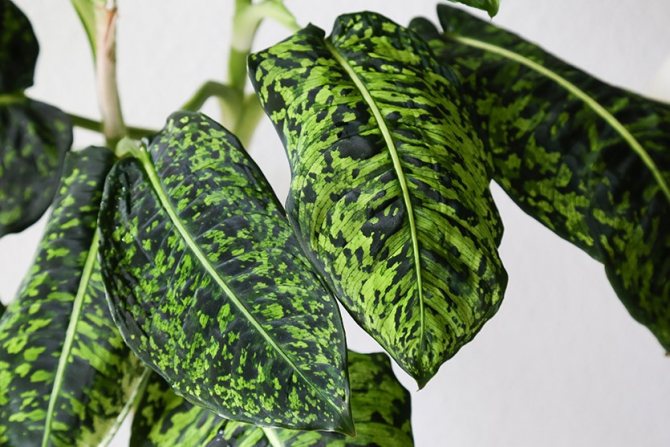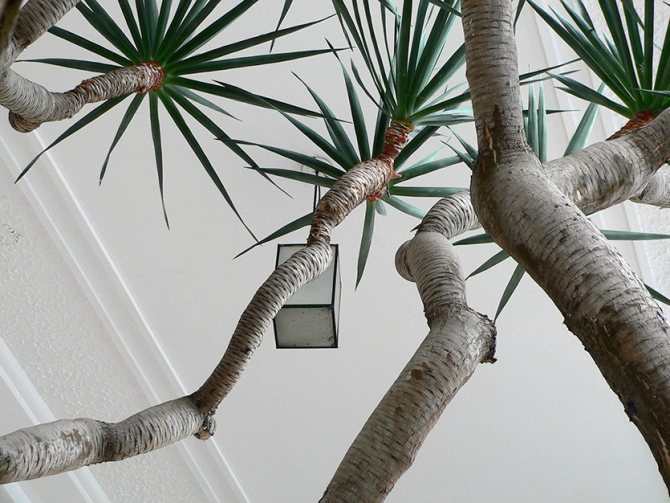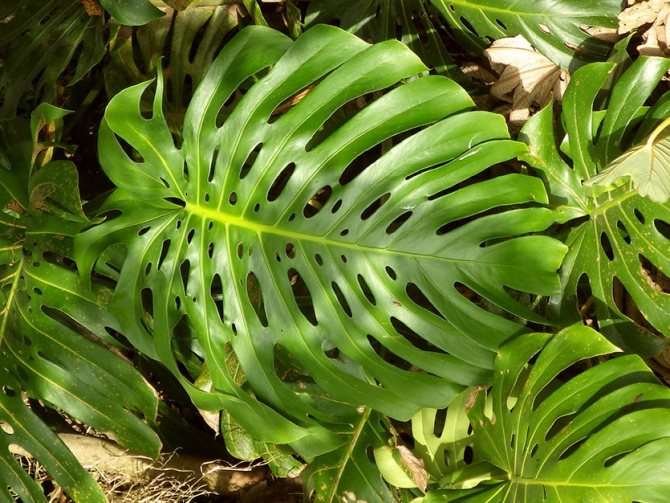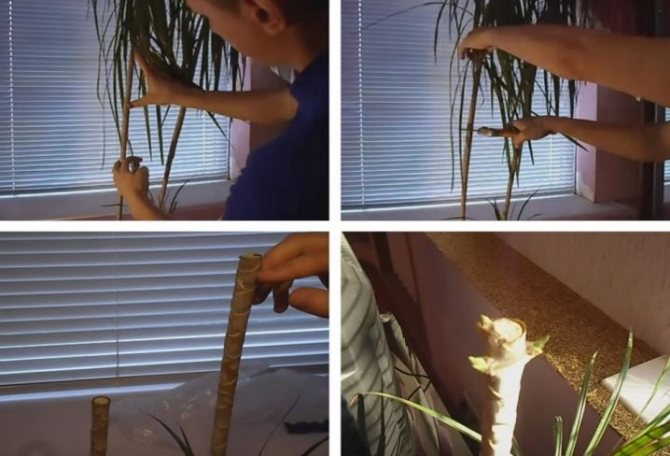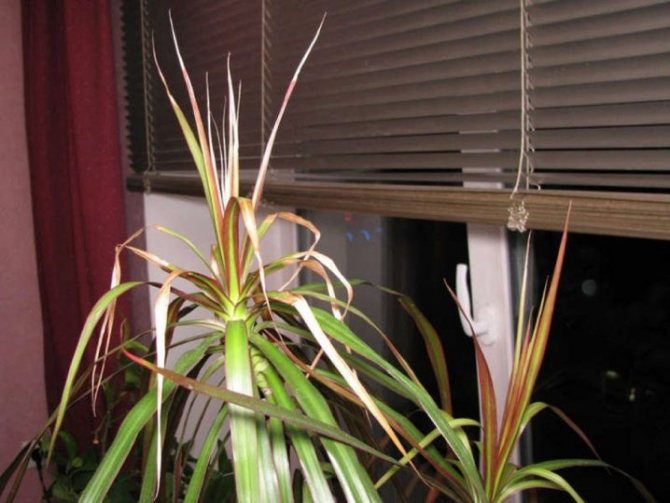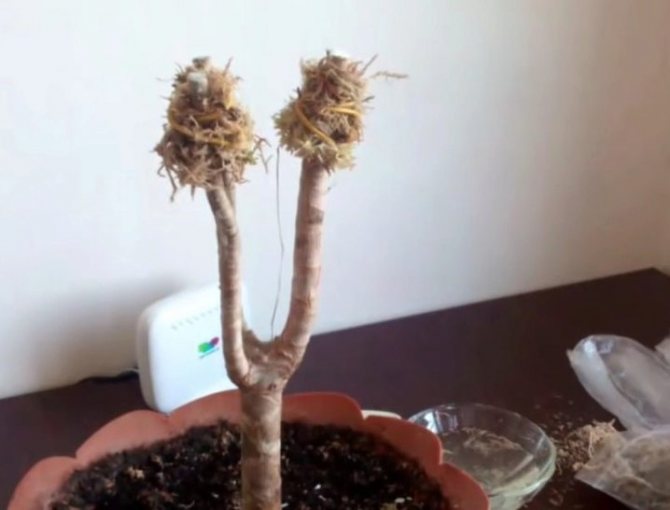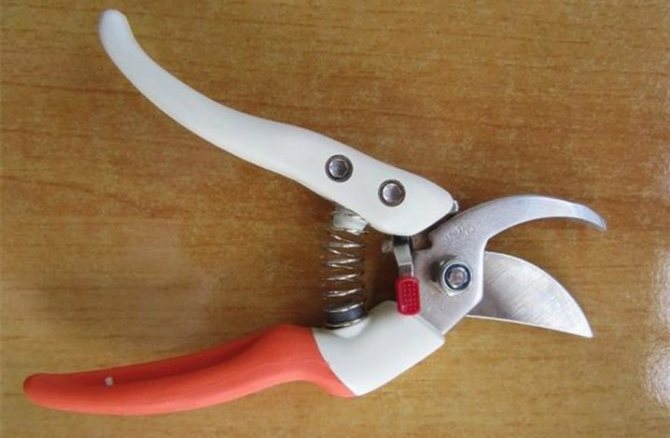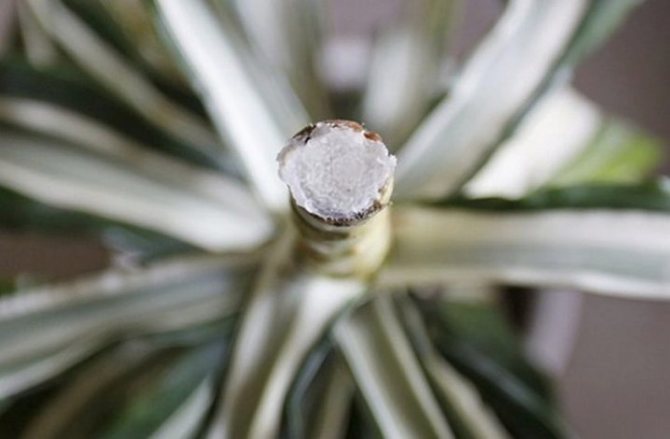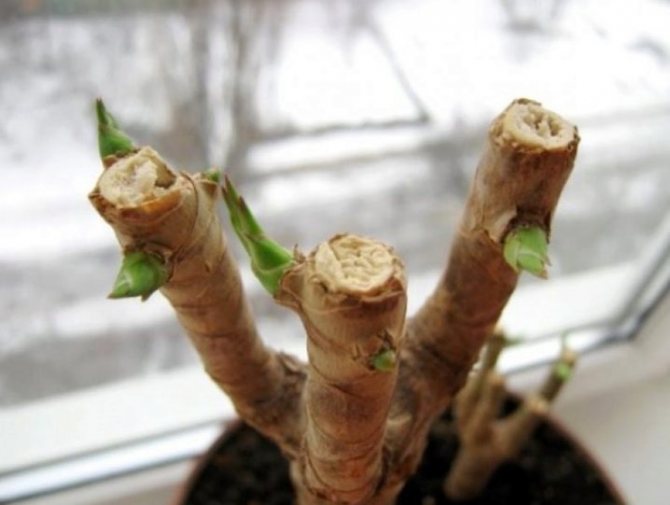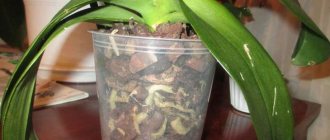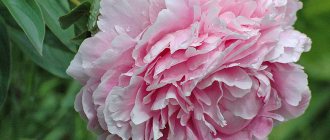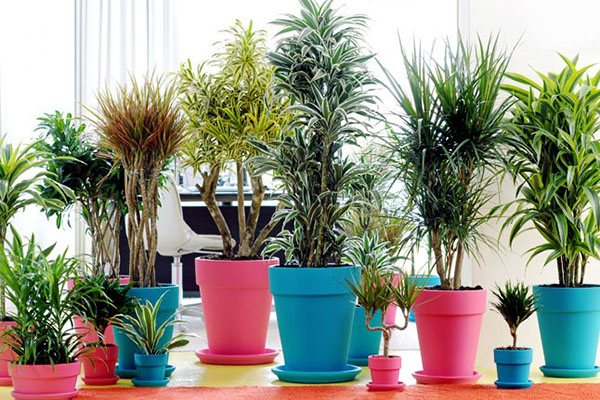
Dracaena grows at home for up to 15 years. In this case, the evergreen plant grows with its top, and the lower part of the stem is bare. The leaves, having worked for a little more than a year, gradually dry up, leaving a scar on the stem. How to prune dracaena to get side shoots? The plant allows you to create new forms by shortening the shoots.
Trimming time
The dracaena stem is a structure in which dormant buds are located along its entire length in a spiral. This is what makes it possible to get seedlings, rudiments of new branches on a cut made in any part of the trunk.
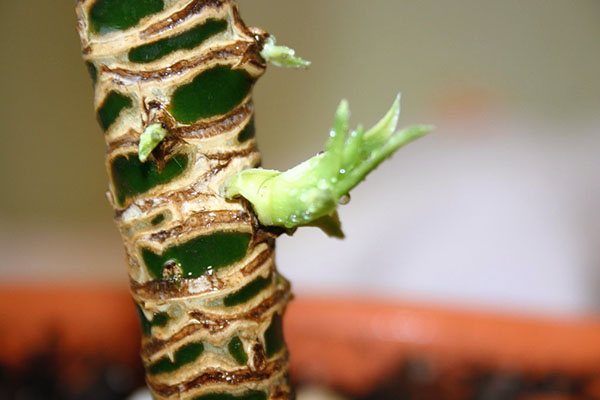

Scheduled pruning of dracaena is done in the active period of growth, when the best sap flow. There are times when the formation of a bush is needed urgently. For example, part of the stem broke off. Then the shortening should be carried out according to the rules, below the place of the break. Any pruning can only be effective on a healthy plant.
The need for pruning
Currently, several main reasons are well known for which the cutting of an indoor ornamental plant is vital:
- in order to preserve the compactness of the room dracaena;
- in order to maintain the most attractive appearance;
- for sanitary purposes.
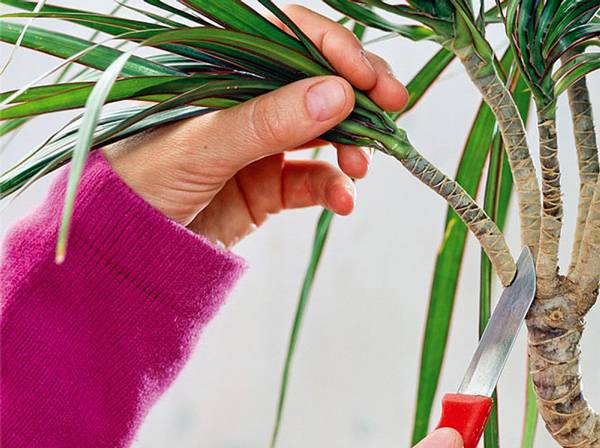

If the false room palm has grown too high, almost to the ceiling, then a breakdown of the trunk is often observed, and to reduce the risk of this phenomenon, primary pruning is used. In indoor floriculture conditions, strong stretching of the plant should not be allowed, therefore, the image is carried out when a height of 0.3-0.4 m is reached. The stem part is cut at the required height, which allows you to maintain compactness and an attractive appearance. A broken plant also needs to be pruned correctly.
If the already branched houseplant has grown strongly or has become insufficiently decorative, with ugly growing shoots, then the dracaena will need formative pruning. A diseased plant with dry or decaying shoots undergoes immediate sanitary pruning, which involves the removal of all diseased parts. Despite the fact that after sanitary pruning, in most cases, the plant is capable of losing its visual appeal for a long time, such an event allows you to preserve the ornamental culture and achieve branching of lateral shoots.
How to properly trim dracaena at home


When shortening the central stem, you need to take into account several points:
- the top with green leaves should be in the zone of comfortable lighting, so the height of the trunk is calculated for the future growth of branches and leaves;
- for the emergence of new shoots, it will be necessary to provide the necessary conditions for the germination of new shoots from dormant buds;
- all operations for making the correct cut, sealing it are carried out under sterile conditions.
You can use a plant for pruning that has 30 cm from the soil to the attachment point of the upper leaves.
Any part of a leafy or bare trunk is cut off. The remote area can be rooted by getting another copy of the dracaena. Cutting dracaena for branching as an operation is carried out with a sharp knife without squeezing the tissues.
After the top of the plant has been cut off, it can be used to root the top, or cut into 7-10 cm shafts, each of which is capable of producing a new plant. The requirement to cut with only a sharp knife and even cuts is mandatory.
If the stem is leafy at the cut, the leaves must be removed 10-15 cm, exposing the trunk. Cover the cut site with garden varnish or molten paraffin so that the inner layer does not evaporate moisture and does not dry out. The rudiments of new branches should form on the cut. There can be from two to five. But not all rudiments will grow. The number of new formations depends on the conditions in which the germination takes place.
Achieved the simultaneous development of all new shoots due to uniform illumination. Dracaena must be turned during germination and subsequent care.
Germination conditions:
- treatment of the stem with water with the addition of a growth stimulant, for example, Epin;
- creating a moist moss cushion around the open cut of the cambium, the waxed part should be open;
- a plastic bag is tightly strengthened from above, creating a constant humidity of 75% inside;
- in the light at a temperature of 22-25 degrees, the plant is kept for a month.
It is important at this time not to open the cut site, not to remove the package, not to change the germination conditions. At the same time, the remainder of the leaves requires watering, the stem also needs to be moistened. Watering is carried out only in the bottom method, draining the remnants of water that has not been absorbed into the earthen lump. It is important that germination is carried out in the light.
As soon as the plant begins to germinate at the cut site, it is ready to continue development without additional cover.
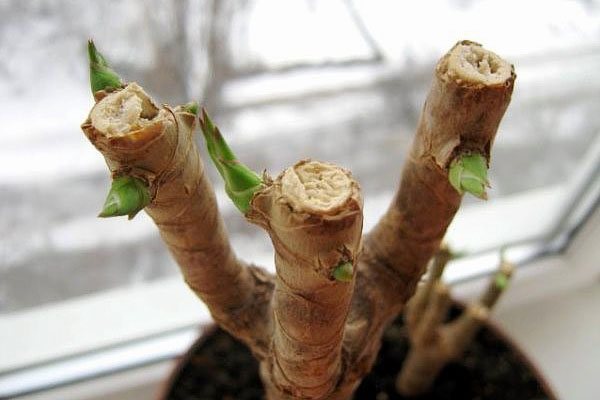

It is not necessary that new branches will develop from all the buds that have hatched. Some will not have enough food and will dry out. But you can cut the plant like this many times, updating it and giving it a new shape.
If the plant has a bare stem, then it is completely placed in the bag after abundant watering. The bag is not removed before the emergence of seedlings, so as not to disturb the microclimate. The plant is watered through the pallet.
When forming a dracaena, bordered seedlings can go along the stem anywhere. Then the palm tree will become multi-tiered.
Features of caring for dracaena
Dracaena belongs to tropical plant species, it came to us from African latitudes. But despite this, she perfectly takes root in the temperate climate of our apartments and offices.
At a young age, dracaena is a rosette of leaves on erect stems, which eventually become hard and covered with woody tissue. That is why the feathery and long leaves of dracaena, located often only on the top of the trunk, so remind us of palm trees.
Plants grow taller with age; indoor specimens of very large growth are often found - 2-3 meters. Dracaena lives with proper care for a long time - from 5 to 15 years.
Since the plant is native to Africa, it requires good lighting, but not direct sunlight. The ideal option would be to place the pot with dracaena on the east or west windowsill or near large (in the floor) windows on the floor, directed to the same cardinal directions. If the windows are facing south, then during the daytime it will be necessary to provide plants with protection from the bright and hot sun.
If your dracaena has variegated foliage, then it will need more light than plants with ordinary green leaves. With a lack of illumination, variegated varieties can completely lose their decorative properties.
Dracaena are very fond of good watering. But it is still not worth pouring the plants, they can die from rotting of the root system. The frequency and amount of watering depends on the size of the pot, on the composition of the soil, on the place where the pot is located, on the season.
But the main criterion for the need for watering is the drying out of a clod of earth in a pot to a depth of about 2-3 cm.
If the leaves on the plants are lethargic and lowered down, then the watering is insufficient, you need to adjust it. In summer, dracaena respond well to daily foliar spraying.
In winter, dracaena are watered about once every three days, since they are in a dormant period. But if central heating batteries are located next to the plants, then watering is increased.
Is pruning dracaena required at home


A plant looks well-groomed if it is pruned and shaped regularly. Therefore, pruning is one of the mandatory operations for caring for dracaena. It happens that the plant has deformed shoots, they should be removed. Then, instead of them, the plant will start up new shoots, more foliage is obtained, the plant takes on new forms.
Any areas with pests and diseases should be removed immediately to prevent contamination of the entire plant. This operation is called sanitary pruning.
Video about the result of pruning dracaena
All palm-type indoor flowers need pruning, but not everyone knows how to properly prune dracaena, for example. Similar actions are carried out when the branches are young, and only with a healthy plant. Withered, drooping leaves are a sign that nothing should be done to shorten the stems, this can lead to the complete death of your pet. Buying a ready-made plant, it is already a formed palm, consisting, as a rule, of two branches. From this moment, its formation begins at your discretion.
When to prune
Is it possible to cut dracaena at your own discretion? Sanitary pruning can be done at any time of the year. Activities are carried out as needed. From a diseased plant, diseased and decaying shoots should be immediately removed. Eliminate all decaying parts. The appearance here can be ignored, the main thing is to preserve the flower. Later, when it looks healthy, you can start decorating it closely.
The decorative trim requirement is more stringent. It is recommended to carry out it in the spring (April, May), when the plant wakes up from hibernation and begins to grow. The juice should actively run along the stems. Pruning flowers is tantamount to surgery and is always stressful. The plant needs time. It is not recommended to prune the shoots in the summer when the weather is hot and dry.
At this time, the earthen clod dries up more strongly, and the root system is depressed, the plant is weakened. It is more susceptible to attack by pests and various diseases.
There are several requirements that you need to know before you upgrade your dragon tree:
- the plant must be healthy;
- use only sharpened and sterile instruments to prevent the possible risk of infection;
- the just produced cut is sprinkled with activated charcoal, crushed by them;
- process with growth stimulants;
- the recommended air temperature in the room should not exceed 25 ° С;
- humidity about 75%.
But how to understand that it is time to hold an event to improve the appearance of the dracaena? It is necessary to pay attention to the following factors:
- the plant has only one trunk (there are no leaves at the bottom, and the upper ones are clearly not enough);
- the palm tree has become too high (2-2.6 m);
- the grown shoots look ugly or are deformed.
What you need to know about dracaena
Dracaena (sometimes Dragon) belongs to the Asparagus family and has up to 150 species. Popular species that are often found in our country are Dracaena fragrant, bordered, bent, deremskaya, godsefa. Outwardly, it is similar to a room palm, therefore, the required care for it resembles a palm tree. Loves temperatures 18-20 degrees, frequent spraying and wiping. Well-lit rooms are welcome, however, the scorching rays of the sun leave spot burns on the leaves.The tree is fed once a year from March to August.
Choosing a pot


Primarily, the pot must fit the plant in size, you do not need to buy pots for growth, as you grow, transplant into a more spacious container, besides, your taste may change by this time.
Ideal for all types of indoor plants ceramic pot, the palm tree is no exception, it is environmentally friendly, it regulates the water and air balance of the root system.
They also live in plastic containers and pots, but it is necessary to loosen the soil more often and arrange drainage more reliably, all kinds of wooden containers are good for a palm tree, they well emphasize the decorativeness of a palm tree, but they themselves require care when in contact with water, it is easier to use them as pots.
Why and when to cut dracaena
What for? Dracaena pruning gives a start to the formation of new outlines, dense foliage without the formation of "bald", long trunks.
When? During the active period of growth, during sap flow. Sleeping buds in a spiral cover the entire trunk, which awaken only after it is cut.
An exception. With minor damage or complete breakage of the trunk, it becomes necessary to shorten the bush.
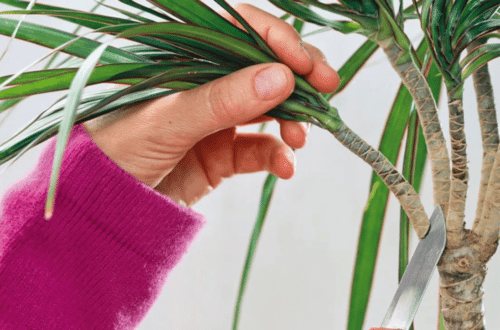

Little tricks
After reading this instruction, you have received complete information on how to trim dracaena at home. However, there are some small secrets, knowledge of which will allow you to get lateral processes much faster. First of all, remember that the plant loses a lot of moisture during pruning. Often this is what prevents the formation of new buds at the top of the hemp. Therefore, immediately after the end of the procedure, spray the stem well with water, this will help restore the water balance of the cells.
To stimulate the growth of apical shoots, wrap moist sphagnum around the trunk and tie it with an elastic band. The harness will need to be periodically removed, check the condition of the shoot and return it back, slightly moistening it.
The paraffin-sealed section should be left outside the damp wrap, that is, the moss should only be on the sides. Finally, a plastic bag is put on top to prevent moisture from evaporating so quickly. Once every 5-7 days, the package is removed and the condition of the trunk under the harness is checked. Once you notice the buds at the top of the barrel, the bag and harness should be removed.
Features of pruning dracaena
When shortening the main trunk of a succulent shrub, it is necessary to take into account the following features of how to cut a dragon tree at home:
- The stem needs pruning, the bare part of which has already reached 30 cm.
- The procedure should be carried out with a sharpened knife.
- The entire length of the plant can be cut into 10 cm cuttings and new dragons can be grown.
- If the stem to be cut has leaves, they must also be shortened by 10 cm.
- To preserve moisture, cuttings are covered with paraffin, garden varnish, wax.
- You should be aware that not all rudiments will sprout.
- In the process of germination, the shoots must be periodically rotated along with the vessel in which they are located. This is necessary for uniform light penetration and for germination of all shoots.


Possible pruning problems
Any organism in a state of stress, which is also the removal of a part of a plant, becomes more vulnerable to adverse factors. After the pruning procedure, you should treat the plant with increased attention for several months.
Be more careful with watering. It is necessary to prevent overflow and overdrying of the earthen coma. Since the dracaena has no crown or part of it, the plant cannot absorb as much moisture as before. When overflowing, the roots cannot breathe. But the soil should not dry out either, since the plant needs strength to germinate new buds.
Protect the dracaena from drafts. Temperature drops for a weakened plant are dangerous.
The main goal is to prevent disease
Take a close look at the ground part of the plant once a week. Pests and diseases are more likely to settle on a weakened plant than on a healthy one. If insects are detected, it is necessary to treat the trunk and the rest of the crown with an insecticide, for example, Agravertin, as soon as possible. If a crown remains on the dracaena and spots of various colors appear on the leaves, your plant has been attacked by pathogenic microflora. In this case, spray the plant with one of the fungicides (Topsin-M, Fundazol). Chemical treatment should be carried out in non-residential premises twice with an interval of 7-10 days.
Root update
Feel the stem and branches of the dracaena occasionally. A decrease in tissue elasticity signals problems with the root system. It is necessary to remove the dracaena from the pot and check the condition of the roots. Cut off the hollow, darkened and dead roots, replant the dracaena again in fresh soil, applying the root formation stimulator "Kornevin".
Once upon a time, I had a dracaena, and it grew up big, very large, and I decided to cut it off and cut it off (my husband said that it looked like she was killed), it turned out something with three branches, specially made different heights, if suddenly several the kidneys will burst - they may not interfere with each other. Places of cuts covered with coal, filled with wax. I divided the cuttings into 2 parts - a total of six cuttings and the main plant came out. A month has passed, on two pruned branches 7 buds hatched, and on one - 3 (thank God); I don’t know how this exuberance will get along now, I didn’t count on such a breakthrough.
Lenka_minsk from July 18, 2012
Dracaena is a plant that is responsive to care. Knowing the optimal conditions for keeping and simple techniques for forming a crown, even a novice florist is able to turn a plant into a luxurious, attractive decoration for every room.
dacha.help
How to prune dracaena for side shoots
An elongated bush with a bare trunk does not look attractive. You need it to branch. Below is the sequence of how to prune dracaena to obtain side shoots:
- Decide on the place of branching.
- Cut off the stem strictly horizontally with a sharp knife. Can't be broken.
- Expose the area below the cut about 15 cm from the leaves.
- Cover the resulting section with wax or powdered charcoal.
- Wrap the moss over the remaining piece, leaving out the waxed cut.
- The entire structure must be constantly in a humid environment until buds appear. This environment can be achieved by constantly wetting the moss or by covering the trunk with a plastic bag.
- The moss wrap should be removed as soon as the bud appears.
How to form a "indoor palm" - step by step instructions
Dracaena at home can grow for a very long time. In this case, the evergreen plant grows with its top, while the lower part of the stem is bare. In the step-by-step instructions, we will consider how to cut the dragon tree to obtain side shoots.
Preparing for the procedure
Two to three days before the planned pruning, it is advisable to carry out preparation, which will allow the plant to safely transfer this procedure and successfully grow new shoots.
First, you need to water the plant so that by the time of pruning, the soil has absorbed the bulk of the moisture, but the lump has not yet had time to dry out.
Secondly, spray the ground part of the dracaena with Epin anti-stress drug. This will help the plant develop special substances for successfully overcoming the shock state and the speedy growth of new shoots.
Preparing the plant for pruning
Prepare the dracaena you intend to trim. Place it in a lighted place and at such a level that it is convenient to work. Check that the stem or stems to be cut are clean. If these areas are stained, wipe with a clean cloth.
Flower shaping tool
You will need a pruner or a sharp knife to cut. The pruning procedure, although very simple, is still an operation, therefore, it is carried out under sterile conditions. Pre-disinfect the tool blade with alcohol. The sharpness of the cutting edges affects the cleanliness of the cut: it should turn out to be smooth, without chipping. Then it is more likely that the apical stalk will take root, and not rot, and the wound on the trunk will heal as soon as possible.
Slice processing
A fresh cut on the trunk should be processed in order to avoid infection. For this purpose, it is desirable to have a special antifungal drug (for example, "Topsin-M") or a substance that can replace it. At home, crushed activated carbon or cinnamon will perform such functions. Garden pitch is needed to cover up the wound. In this way, drying of the tissues adjacent to the cut site is prevented. Instead of a garden varnish at home, you can use a wax or paraffin candle.
Photo gallery: means for processing the dracaena cut
How to make an incision correctly
Decide on the location of the cut. Before you cut off a part of the dracaena, take a closer look at it, imagine how it will look when it releases several new branches at the top of the remaining stem, and then decide at what height the part of the plant will be cut off.
The cut should be straight. Complete it in one motion.
Rooting the crown
Place the cut off top of the plant on rooting. If it is covered with leaves, cut the leaves to a quarter or a third of the cutting height. Place in a glass of water, where add a tablet of activated charcoal or a small piece of charcoal to block the development of pathogenic microorganisms and rotting of the cuttings.
If the cut part of the plant is rather long, from 20 cm or more, you can divide it into several parts 12-15 cm long, process the upper cuts as described above, and also put in a container with water for rooting, so that you can later plant it in the ground.
Top dressing to stimulate the germination of dormant buds
After three to four days, when the plant overcomes the shock state after pruning, it is necessary to feed the plant at the root and along the stem with fertilizer with a high nitrogen content. Such dressing is carried out after watering to prevent root burns. The easiest way is to use ammonium nitrate at the rate of a teaspoon per three liters of water. But if possible, it is better to use a specialized fertilizer with an improved composition of Plantafol in a ratio of 30:10:10.
Top dressing is repeated every 2 weeks for 2-3 months, until new shoots reach a length of 4-6 cm.
How to decorate a tree
Fluffy dracaena is the result of pruning and leaving not a single day. You can grow a bush in several trunks by planting cuttings in one pot. In the process of growth, the roots harden and intertwine with each other, requiring more capacity. Splendor can also be achieved by installing a horizontal insert between the stems.
It will take a lot of time to decorate a dracaena, which looks like a palm tree. The apical cutting from the mother plant develops very slowly.
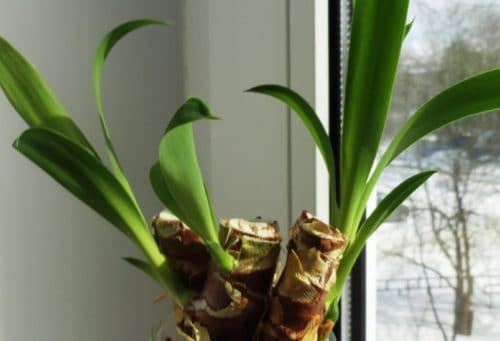

Dracaena breeding methods after pruning
The process of pruning dracaena can be combined with reproduction. One of the ways we have already considered is rooting (or rooting) of the apical cuttings. But you can propagate dracaena from the remains of the trunks - stem cuttings. This can be done in two ways. Vertical rooting. Remains of stems that are suitable for breeding should be firm and firm. They should be cut into small pieces (about 7 cm), making cuts along the leaf scars. At the same time, the tools must be clean and sharp. When rooting vertically, dracaena cuttings are immersed in a moist substrate to a depth of about 3 cm. It is best to root cuttings in sand, perlite or vermiculite.If you planted them in the ground, then it is recommended to sprinkle it on top with a thick layer of sand.


Vertical rooting
Horizontal rooting. This method differs in that the stem cuttings are not stuck into the substrate, but they are laid horizontally on moist soil, slightly pressing them. From above, the cuttings must be covered with a bag to create greenhouse conditions. As the shoots grow, the rooted piece of the stem will begin to deteriorate, as all the nutrients will go to the formation of roots and young shoots. As a result, the shoots will be fed from their own roots, and they can be separated and planted in separate containers.


Horizontal rooting
Usually, cuttings take root after 1-1.5 months. Shoots are formed by the end of the second month. As you can see, there is nothing difficult in updating and reproducing dracaena. Therefore, if you do not know what to do with a plant that has long ceased to be a decoration of an apartment, use our advice and give it a second life.
A source
Is it possible to get a thick trunk
A thin and fragile trunk, if handled carelessly, can break, and all your labors will collapse in a moment. Therefore, building it up in diameter is an important achievement. In order to get a thick trunk, you should adhere to the following points:
- Mandatory feeding.
- Bright, non-scorching light.
- The air temperature is 18-25 degrees.
- Do not allow the soil to dry out.
In winter, when the temperature is lower than the set one, it is necessary to reduce the frequency of watering.
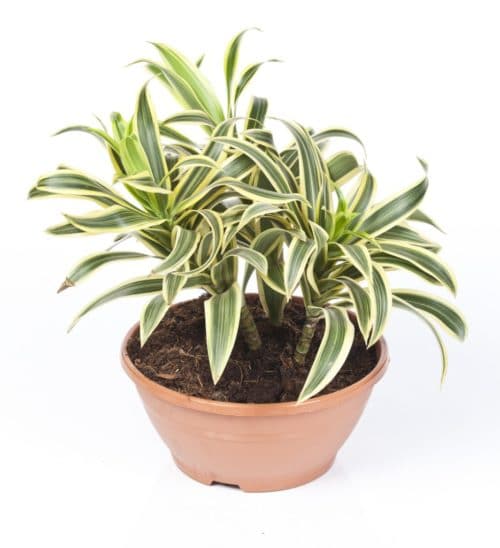

Getting started with circumcision
Since you can trim the dracaena to get side shoots at any height, first mark the point where you would like to see branching. With a quick motion, cut off the trunk at this level. Set aside the cut part for now and take care of the plant itself. Using the same scalpel, cut off all the leaves 10 cm below the cut level.
While you are doing this, light a candle to collect the molten wax. After pruning, pour the wax onto any suitable surface first, and then transfer the plastic mass to the cut. Try to cover all the pores in the cut with paraffin, but be careful not to burn the plant with the too hot compound.
Bansai from Dracena
Pruning is exactly the procedure that will help grow a dracaena that mimics a bansai. Getting such a tree is not a matter of a single year. Tips for forming a multi-stemmed cascading dracaena bansai tree:
- A five-year-old dracaena with a trunk diameter of 5 cm is ready to form a bansai.
- Several shoots should hatch under the cut, further growing up. This will cause the trunk to thicken.
- The foundation has been laid, now it all depends on what kind of tree you want to see in the future. After a while, new overgrown trunks can be cut close to their base.
- Repeat pruning on the next branches.
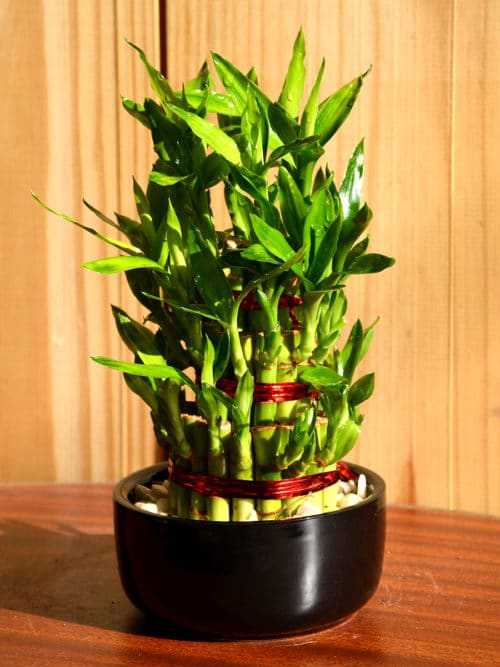

What types of dracaena need to be cut
Among the variety of dracaena, there are varieties that need regular pruning. These are the varieties of Reflex, Surculose, Fragrant.
Dracaena Bent (Reflexa)
In nature, it is a huge tree up to 10 m tall. In home floriculture, it is grown as a bush up to 1m tall. The plant has a bright color of pointed leaves, up to 20 cm and thick powerful stems. Foliage color - from dark to light shades of green, with beige or yellow stripes.
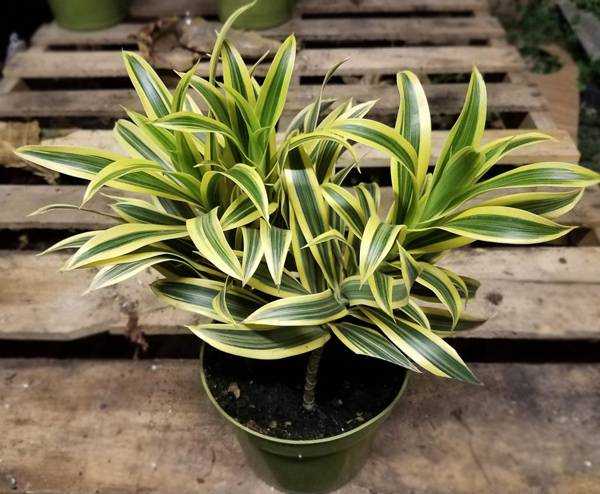

Dracaena Surculosa escaping (Surculosa)
New shoots are growing out of the ground. In indoor conditions it reaches a height of 1.5 meters. This species grows well in width, the number of shoots in the pot increases rapidly. Leaves are oval, with a pointed edge.
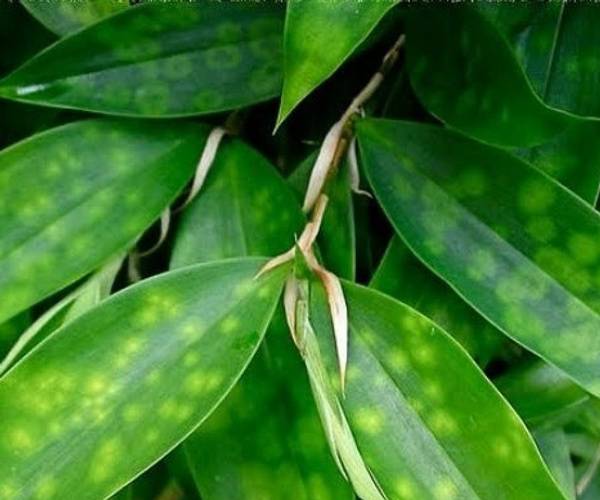

Several subspecies of this dracaena have different foliage colors. Juicy bright green leaves are covered with yellow, white, cream or light green spots of various diameters.
Dracaena Fragrant (Fragrans)
In nature, it reaches a height of six meters. At home grows up to 1.5-2 meters... Bright, glossy leaves 60 cm long densely cover the erect stem. The color of the leaves is solid, dark green or with light stripes.


Dracaena pruning videos
The video shows how to properly cut the dragon tree in order to form a beautiful crown of the plant:
What shape can be given to the dragon tree, learn from this video:
Growing a beautiful Dracena tree is achieved by periodically pruning it. Thanks to her, you can get new decorative leafy flowers, form any shape of a bush.
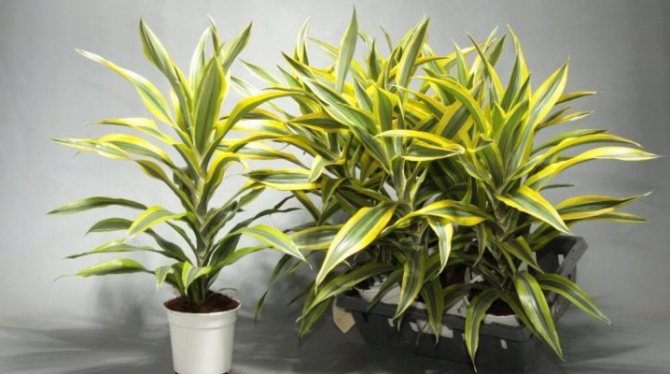

Dracaena formation is a very simple process that every amateur florist can master. The main thing is to do the trimming of the trunk and leaves in time. Thanks to this, she will become lush and look more luxurious. Such procedures must be carried out regularly, observing all the rules.
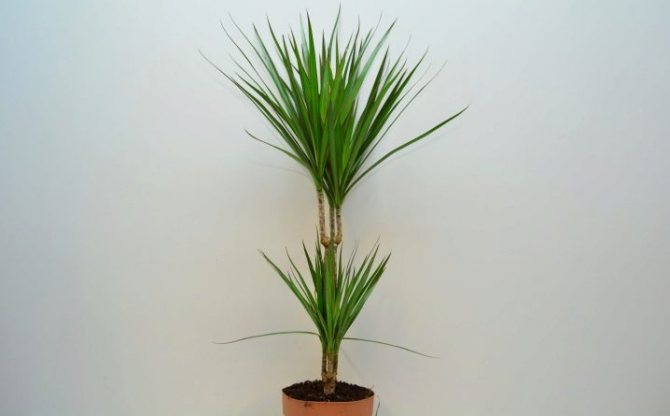

Pruning procedure
In flower shops, you can buy an already formed dracaena bush. Experienced flower growers left 2-3 shoots at first. But is it allowed to trim them in the future? The plant visually resembles a palm tree and is sometimes called that - Dracaena palm. Let's consider the question of how to prune a palm tree correctly in a little more detail.
2 types of trimming are possible:
- Sanitary and prophylactic. It consists in removing yellowed, dead, rotten and diseased leaves, roots, shoots, etc. It is also carried out when the shoots have become too long and run into any obstacle (ceiling, wall).
- Decorative. It is carried out in order to obtain a beautiful crown.
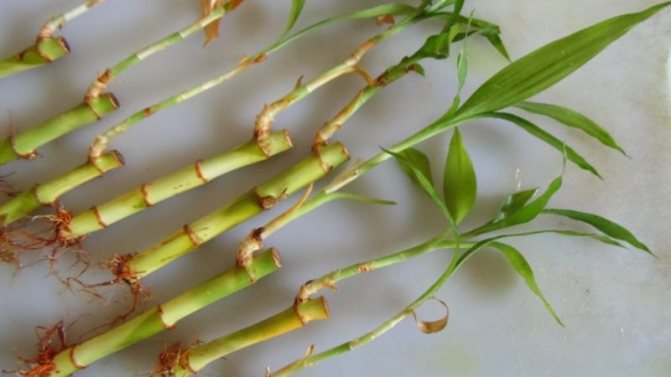

Experienced flower growers left 2-3 shoots at first.
Why do you need cropping?
Very often, pruning dracaena is necessary to preserve the flower. And also it is carried out for some other reasons:
- give a presentable look - for renewal and rejuvenation;
- choose a size that is convenient for you so that it is not too high;
- sanitary pruning.
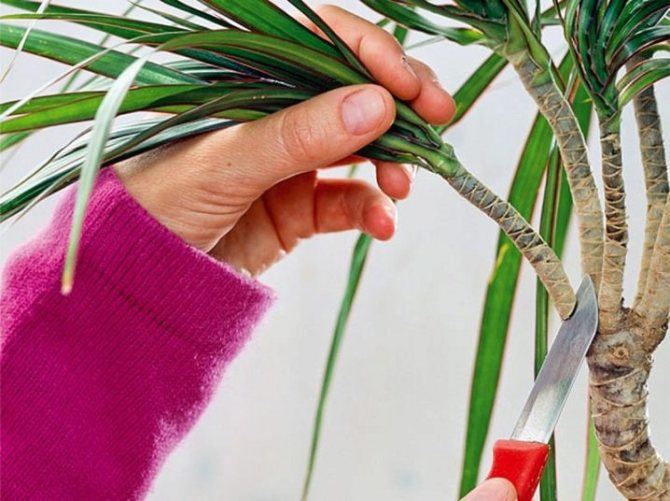

If the dracaena has grown to a fairly large size, for example, to the ceiling, then it may begin to break. And in order to avoid such problems, it must be trimmed.
It is categorically impossible for the flower to grow to a large size. It must be cut when the length has reached 40 cm.
Thanks to this, the dracaena will be compact and will not lose its decorative qualities.


Even when the dracaena was immediately pinched to form a crown, and this was done correctly, it is very likely that when it grows up, it will still lose its presentable appearance. Therefore, it only needs to be trimmed.
Pruning is necessary if the plant is sick and leaves fall. This is the only way to save the flower.
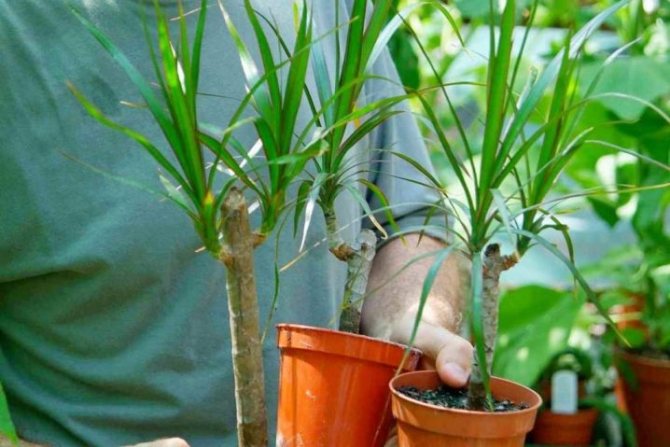

Dracaena perfectly tolerates pruning, and this allows you to create a beautiful crown. Thanks to pruning, you can easily maintain a presentable plant appearance, update and give the shape you want.
Now let's figure out how to properly trim the dracaena.
Cut height
First of all, focus on the desired end result. Estimate how high you need the dracaena. How to cut for branching, we will analyze the main stages of the procedure. So, take a close look at your plant and its future place.
- You need to estimate what height the plant will look best in the interior.
- It is necessary to take into account the requirements for its lighting. Indoor dracaena is very sensitive to sunlight. The development of the apical buds will occur precisely due to the light coming to the tops of the left hemp. Therefore, if the plant is on the windowsill of the north or east window, it is better to cut it lower, since the lighting in the upper part of the window opening is worse than in the lower part.
Time spending
Let's figure out when it is necessary to carry out such a procedure. Experts say that the most suitable time is spring, namely: April and May... At this time, there is such a process as sap flow, and at this time there is a dynamic growth.
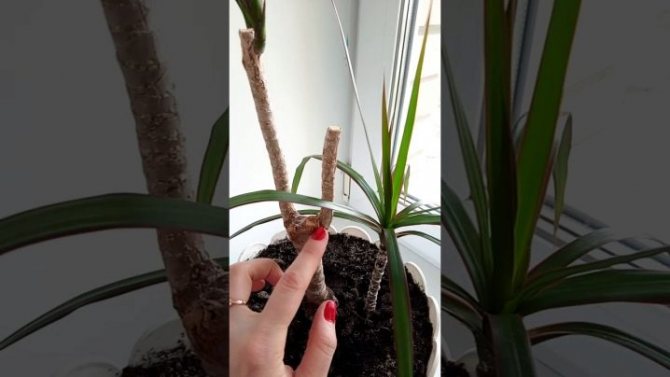

In spring, phytohormones are produced in large quantities, with the help of their lateral shoots grow faster. The incisions at these moments are transiently tightened.
Many are interested in the question of whether it is allowed to prune dracaena in winter and summer.
Florists argue that during these periods it is not worth carrying out this operation, because it is a lot of stress.... The plant is dormant, and all processes are in a slowed down state. If you cut the flower at this time, the sprouts will germinate for a long time or, at all, will not appear, and the wound will heal for a long time.


And also pruning the plant in winter or summer is possible only in case of an emergency, for example, if the plant is broken. It must be taken into account that this can only be done on a healthy flower.
How to prune and re-arrange a plant
With all the variety of forms and varieties of dracaena, they have a common feature: the trunk grows in height and branches extremely rarely.
Why cut dracaena:
- to improve the appearance, increase the decorative effect, the dracaena is rejuvenated - the elongated shoots are shortened by pruning. Since the peculiarity of the plant is the dropping of the lower leaves of the crown with a fairly rapid growth, often the elongated shoots take on an unsightly appearance (bent, deformed, etc.);
- to form a lush crown. Dormant buds are located throughout the trunk of the dracaena, which are invisible to us. Removing a part of the trunk stimulates the awakening of such buds just under the cut, lateral shoots will appear from them, which, when they grow up, will increase the mass of leaves. By increasing the number of shoots, a more lush crown is formed;
- for growing a multi-stem plant and simulating bonsai. In this case, the trunk is cut off closer to the ground or at a low height, and then a crown is formed over the years;
- to preserve the plant. If the dracaena fell and broke or fell ill and began to die rapidly, to save at least parts of the plant, the tops or parts of the branches are cut off and rooted;
- for breeding. Apical and stem cuttings root quite easily, in addition, stem cuttings are capable of releasing lateral shoots from dormant buds.
Reasons for cutting a flower
Basically, the owner of the plant relies on his own opinion and taste. If, from your point of view, the dracaena has reached a considerable height, has a bare trunk with a bunch of leaves on the crown and has lost its former attractiveness, you want to update and rejuvenate the plant or get a multi-stemmed specimen of dracaena instead of a single-stemmed one, then with the help of pruning, you can adjust the height of the plant, the density of the crown and the whole appearance.
When should you prune?
There is an important rule: this procedure is carried out exclusively on healthy plants and only during the period of active growth - in spring or summer. The fact is that during the growing season, the plant organism produces special substances for the construction of new cells, for the successful healing of wounds. In winter, during a period of low temperatures and a decrease in the intensity of sunlight, it is very difficult for a plant to endure such stress. And weakened plants may even die.
The only exceptions are emergencies. For example, when the dracaena is broken or damaged (rotted) the top (trunk), or if it rests against the ceiling with the top, then urgent pruning is allowed. In this case, additional attention will need to be paid to caring for the plant so that dormant buds can germinate safely in the dracaena.
No special in-depth knowledge is required to perform pruning on your own. It is advisable to just have an idea of the process.
What will happen if you pinch (stop) dracaena; is it possible to trim the top, shorten a part of the trunk, cut off the leaves?
Some plant lovers unknowingly call the separation of the dracaena apex by cropping or pinching. In fact, these plants are not pinched, but cut. They do this in order to subsequently root the part separated from the mother's body and get a new plant.
You can cut off not only the top. Trunks are often shortened. Parts of the trunk 12–15 cm long are capable of giving rise to new shoots from dormant buds.
Dracaena leaves should not be cut off. It is in the leaves of plants that substances are formed to build new cells and tissues. Part of the crown is removed only on a cut cuttings if it is all leafy.
Imitation Dracaena Bonsai
Real bonsai has been grown for decades and is a form of art. Dracaena is used to form an imitation bonsai with the help of pruning, and this process will also take more than one year.
Getting a thick trunk
The main task is to build up a thick trunk. Since dracaena trunks grow in thickness rather reluctantly, it is necessary to provide optimal conditions for growth. The first is bright diffused light, the second is the temperature from 18 to 25 ° C, the third is watering as the soil dries, the fourth is top dressing. It is imperative to control the combination of these conditions. That is, the lighter, the warmer and more humid. With a decrease in light, you need to lower the temperature and reduce watering, this will prevent the plant from pulling in height.
How to form a tree
After 3-5 years, when the trunk of the dracaena at a height of 10-15 cm from the ground reaches a diameter of 4-5 cm, the trunk is trimmed. With proper care, several new shoots grow below the cut. Now these shoots will grow in height, and the trunk will thicken slightly. In the future, everything depends on the imagination of the grower. After a while, you can cut new trunks closer to the place of the first cut or away from it, at the same or at different levels, then repeat the pruning on all branches or selectively so that the dracaena can grow.
In this way, an original cascading multi-stemmed version of dracaena is created, reminiscent of a bonsai.
Photo gallery: growing dracaena bonsai
Step by step recommendations
In order not to make the plant only worse or not to destroy it, you must clearly follow the step-by-step instructions during pruning.


To begin with, we take an alcoholized instrument for this. First you need to determine the height where the cut will be made, while it is strictly forbidden for it to be below an area of 30 cm... The future slice should be located at such a level that there is easy access to light. Then, with a sharp disinfected knife, carefully and accurately make an incision in the place where the mark was made.
It is impossible to break shoots under any conditions... The juice that appears at the place where the cut is made is removed with a cotton pad. Then this area must be treated with garden varnish, crushed activated carbon or molten paraffin. It is better not to use wax, so as not to harm the flower.... This is to prevent the barrel from drying out.
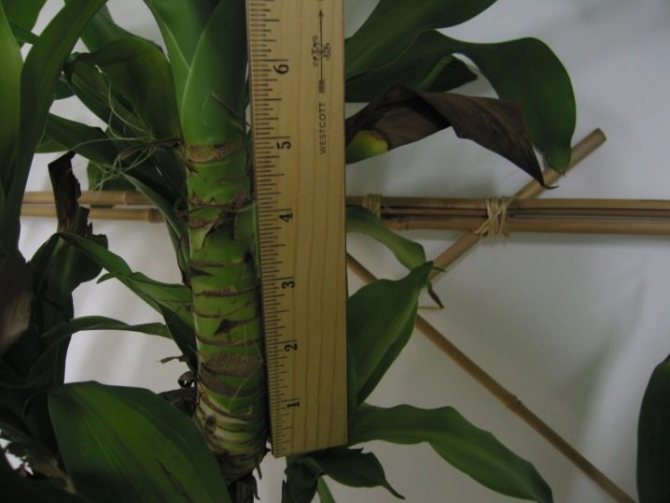

In the event that foliage is located at a distance of 10 cm or more, it should be removed to minimize the evaporation area and rapid germination of sprouts.
To awaken the kidney formation on the trunk, it is recommended to treat it with a growth stimulant. An aqueous solution of biological growth stimulants is well suited.
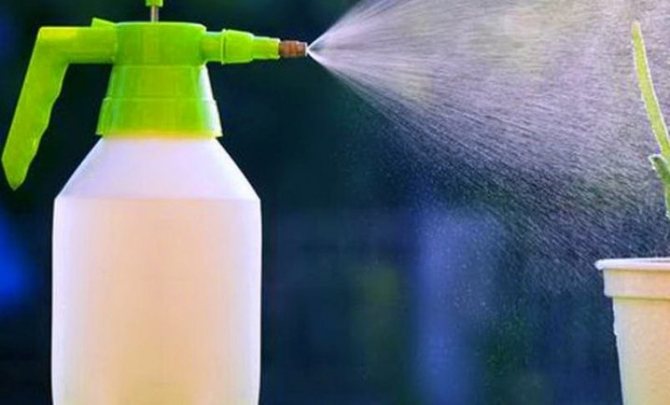

Next, you need to wrap the trunk slightly below the cut with moistened peat moss and leave the cut open. Then put on a regular plastic bag or cling film to maintain the desired humidity and temperature. Then wrap the incision with peat moss.


The next month, new shoots will form on the trunk, but before they appear, you need to clean the greenhouse at least once every 5 daysto water and ventilate the plant, and then we remove it in a dark, cool room.


In the event that you have a young dracaena with one trunk, with a good height, not less than 30 cm to the leaves, then you have the opportunity to prune it to obtain lateral shoots for branching. To do this, you need to cut about 10 cm from the top of the flower. After that, a certain number of shoots should form.
It is recommended to keep only the three strongest shoots so that they have more room for further growth.
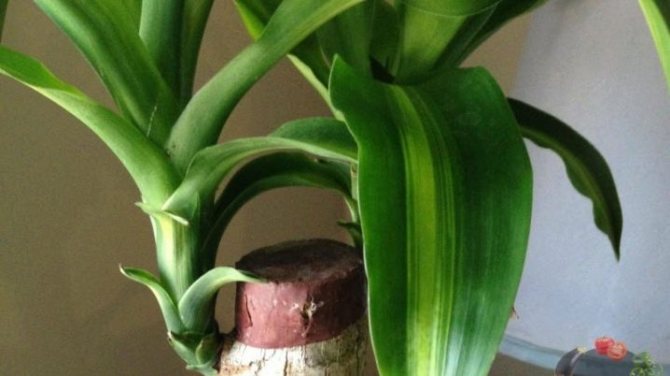

If pruning is done at home, certain rules must be followed. They will differ depending on the goal you have set: you will form a beautiful crown, you want to rejuvenate a flower or carry out sanitary procedures.
What to do?
If the dracaena is frozen and you have determined what exactly has suffered in the flower, immediately proceed with actions to save it. In mild cases of hypothermia of the roots, the flower will need special care. The roots are damaged after freezing, so the first thing to do is to limit watering. The roots are already sick, so they cannot fully work and absorb moisture, which leads to their decay. In this case, it is not worth watering the soil directly; it is best to gradually pour warm water into the pan. The flower will absorb as much moisture as it needs. Spraying can also be used to restore. This is a good way to keep the flower underweight, and at the same time, it is a huge help for its health. Fertilizer must be added to the water for irrigation; it should be half as much as for irrigation. Another miracle remedy, if the flower is frozen, is spraying with epin. This remedy can revive the plant.
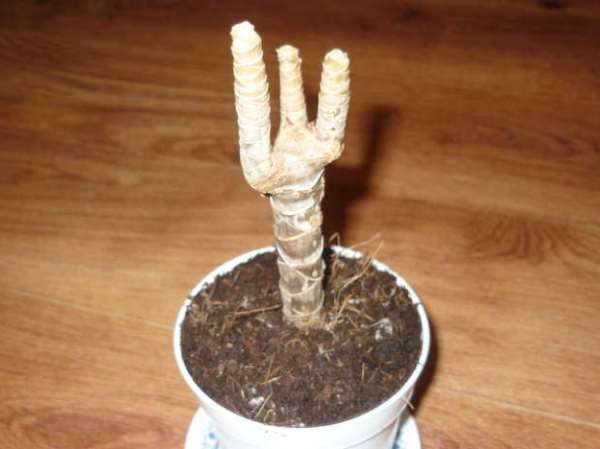

If the trunk is soft to the touch, this indicates rotting of the flower. In this case, you will need to cut off all soft spots. This will require a sharp knife and alcohol. The knife must be disinfected at every next cut. You need to trim the trunk to the point where it will be solid and healthy. In some cases, after pruning, one stump may remain. But such measures will save the plant's life. After a while, usually in the spring, during the awakening period, the remaining shoot will sprout. So, when the stem decays, only cuttings will help the plant.
If the leaves of a plant curl and then fall off, this indicates damage to the roots. The best salvation would be to transplant it into another pot. When transplanting, you can see how damaged the roots are. When replanting a plant, you need to very carefully remove it from the pot. Next, you need to inspect and feel the roots. If they are white and without dark spots, the plant can be saved. Next, we feel the trunk, if it is solid - great, the plant is ready for transplantation. If the roots are wet or damp, let them dry. At this time, we are preparing a new pot. Pour drainage at the bottom of the pot, and dry soil on top. Now you should lower the trunk into the pot, leave a distance of one finger from the bottom to the roots, and sprinkle the roots with earth. After transplanting, do not water the plant for 2-3 days. Follow-up care is moderate watering and spraying with water and fertilizer.
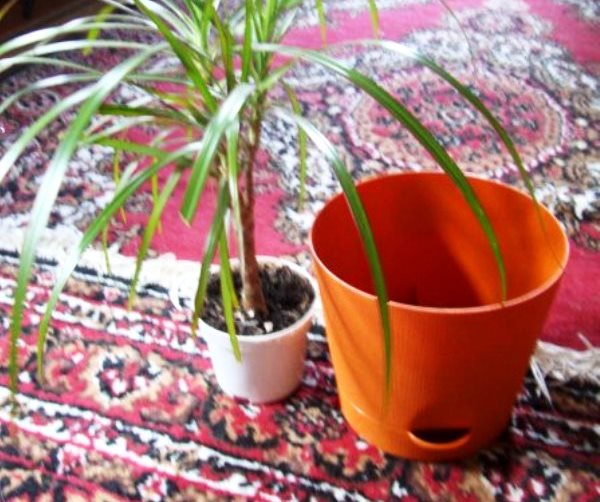

In the case when only the leaves of the plant are damaged, if it stood in a draft and they froze, the pot must be rearranged to a warm and bright place. Periodically, the plant can be sprayed with warm water. The frozen leaves will gradually dry out, so after they dry, you need to carefully cut off the dry parts with scissors. Of course, the plant will not look very attractive, but over time it will recover. After frostbite, moderation in watering is important. Water very carefully. In the spring, the plant will need to be transplanted.
How to reanimate dracaena. Tips - how to save dracaena from death
How to reanimate a dracaena if the trunk is fragile, the bark wrinkles, and the leaves begin to rot? "Surgical intervention" in the form of grafting will be required: cut off the top of the dracaena and either immediately root it in the ground, or put it in a container with water so that roots appear. This usually takes 2 months.
If the poor condition of the dracaena is associated with dry air, a warm shower will help bring the pet back to life. To prevent water from flooding the roots, put the pot in a plastic bag and pull its edges around the trunk.


If the stalk (and later - a full-fledged plant) stands in water for too long, its trunk may turn yellow. This is because the aquatic environment promotes the activation of bacteria, and the changed color of the trunk is evidence that the plant may die. You can avoid such a development of events by urgently transplanting the dracaena into a pot of earth.
A plant affected by cold air will be saved by several sprays with warm water and placing the pot in a place protected from drafts. In cases where the temperature dropped below 15 degrees Celsius, there is a great danger that the roots have suffered. If a check shows that this is how it turned out and the roots began to rot, they are removed and the dracaena is transplanted into a new pot. In cases where there are practically no healthy roots left, the top of the flower is cut and rooted.
The broken woody part of the stem is fairly easy to root. To do this, the place of scrapping must be cut with a sharp knife (the cut must be horizontal), hold in the air for a while so that it dries up, and lowered into a container of water, where a tablet of activated carbon is added (it will save the future plant from decay).
The remaining part of the stem in the pot can also be saved. The fracture site is carefully trimmed and filled with wax. After a short time, shoots will appear on the sides of the trunk.
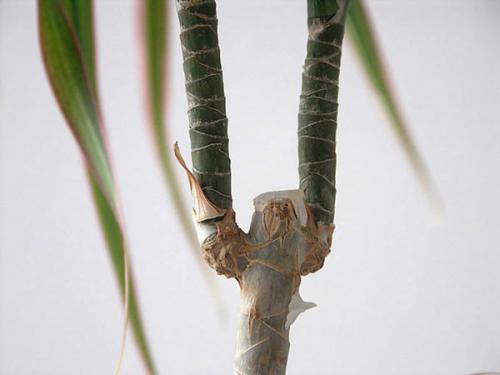

If it is not a lignified but a green shoot that is broken, it is recommended to root it in moss or sand. In order for the roots to form faster, the tip of the shoot is treated in the "Kornevin" preparation, and then artificial heating is organized (the best temperature is 25 degrees).
TIP: if the stalk chosen for rooting is very small, it is stuck in the ground and covered with a glass jar, providing a greenhouse effect.
How to determine the need for trimming?
Before you start pruning, you need to determine if it is really necessary. Remember that experts strongly recommend performing the procedure as rarely as possible. But still, occasionally pruning is really necessary, but the minimum amount of plant should be cut off.
So, pruning is necessary for the following reasons:
- For safety, if the plant grows in the immediate vicinity of the house.
- For aesthetic reasons (dying or dead leaves are removed).
- To reduce the size of the plant if it is overgrown.
- For easy collection of seeds, fruits or flowers.
Still, it is advisable to trim only really when necessary, and not for aesthetic reasons. The latter can significantly harm the plant.
To determine problems with a palm tree, it is worth examining its leaves and branches. A brown, yellow or white hue indicates that they are dying off or are already dead, and they will also hang down. By the way, yellow leaves indicate a lack of potassium. Pruning in this case is unacceptable, as the plant will die. Apply potassium top dressing to the soil and eliminate pruning for at least one year.
Pay attention to the presence or absence of broken branches. If there are any (including broken ones), remove them immediately, before the tree begins to die. Keep in mind that the presence of flowers or fruits also drains energy from the plant and slows its growth, so it may be rational to remove them.
In the absence of damaged or dying leaves, fruits or flowers, or other problems, you should not prune the tree. It will only hurt him.
Slicing processing
The main point when pruning dracaena is the correct processing of the cut of the trunk or shoots.
Pruning the plant is done with a very sharp knife. And then it is necessary to process all the sections, since without this they rot or begin to dry out.
It is best to fill the sections with molten paraffin.
... This will prevent strong evaporation of moisture from the cut.
Good results are obtained by wrapping an already filled cut with moist moss and tying it with a plastic bag. In this form, the cut must be kept for some time until it overgrows.
Getting cuttings
There are two pruning methods to form the crown of dracaena.
This method removes diseased, damaged leaves and shoots.
Most flower diseases appear due to improper care: overflow, dry air, drafts.
This is immediately reflected in the leaves, which begin to turn yellow, dry out and fall off.
The stem is rapidly stripped and the plant becomes unattractive. Therefore, ten days after the treatment of the flower with fungicides, it is possible to prune.
The purpose of pruning is to prevent further spread of the disease and to remove damaged leaves and shoots.
Decorative trim
Aimed at the formation of a beautifully shaped dracaena, with leafy shoots.
How to understand that you need to pinch the top to get side shoots:
- the plant has grown almost to the ceiling, has become too high, which makes it difficult to care;
- shoots are deformed and take on an ugly shape;
- the plant has only one trunk, which is bare and looks unattractive.
- the plant must be healthy, without pests;
- do not combine transplanting and pruning a plant, the interval between these procedures is up to two months.
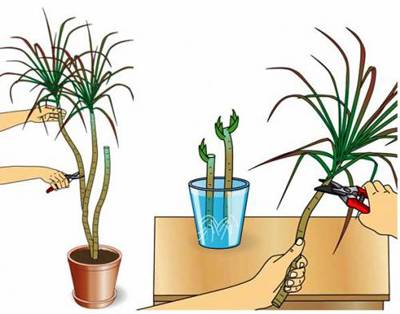

How to properly trim the dragon tree:
Items required for pruning:
- sphagnum moss - has a loose structure, is able to absorb and retain moisture;
- garden var - will protect the wound from the leakage of juice and from infection;
- a sharp pruner or knife - to get an even cut.
Pruning a plant is an important procedure, and for some flowers it is simply a necessity. Its main task is to create new shoots so that the tree begins to branch, which contributes to good crown growth.


How to form a crown, and why do you need sanitary pruning? There are several reasons to prune a plant, the main thing is to do it right:
- 1 Deformed shoots. In this case, sanitary pruning and crown shaping are required. This type of pruning is used if the plant has grown too much and no longer looks attractive. After the procedure, new buds and shoots appear, and the appearance improves.
- 2If the dracaena has dried leaves, weak shoots, then they must be removed so that the plant does not get sick completely. You need to cut them off completely, leaving only healthy areas.
One of the typical representatives of tropical plants, the asparagus family, is dracaena. She came to us from Africa. She attracts, first of all, with her unusual external appearance.
To get an unusual-looking dracaena for yourself at home, you need, first of all, to wait for the breeding season. It is at this time that the crown is formed by separating the lateral shoots. Dracaena mainly blooms upwards. She exerts all her strength precisely in order to grow and make the trunk stable and strong. Especially at home, when the plant does not need to survive, there is no reason for it to branch out and dodge, so you need to guide the plant yourself.
Before starting the process of separating side shoots directly, you need to prepare all the tools necessary for this. Separate the shoots with a sharp knife, which must be sterile.You also need some rubbing alcohol and a cotton swab, literally, to apply a couple of drops. Also get charcoal, sulfur, epin (drug), root (also drug), moss, plastic bag, rubber band, jar of water, and pegs or any other device to guide and support the dragon tree.
Branching is usually not carried out on a young plant. But when the dracaena has already reached the required size, it will have a well-formed body and root system, sufficient small branches (future cuttings), then you can take up this plant. If, moreover, you are planning to breed dracaena, then you will definitely need a knife in order to cut off the stalk, and not pinch it off.
When we cut off, the stalk remains viable, it can be propagated further. Cutting at random is not worth it - select a specific place below the bud, about 6 centimeters, and then cut off the cutting with a precise movement. The places you choose for trimming should be thought out in advance. See how the cuttings grow and think about how they would start to turn if you already had a beautiful stem.
After you have cut all the cuttings, sprinkle the cut sites with charcoal or sulfur so that parasites do not start in the wounds. After a couple of weeks, you will already begin to notice the growth of the first new shoots, but in order to get such a result one hundred percent, after you have treated the wound with charcoal and it has tightened a little, apply one of the above drugs (epin, root), which perfectly promote growth and the development of new viable shoots.
It should be borne in mind that a sufficient amount of sunlight is needed to form a lush crown of a room palm. Therefore, the trimmed dracaena is best placed on the south or southeast window. The formed stem can then be subjected to this procedure again. The result is a very interesting and unusual plant that will decorate any residential or office space with its exotic look.
Description
At home, exotic plants are often grown, including palm trees. The most popular varieties are date, dracaena, yucca and some others (about 2000 varieties are known in total, which differ in trunk shape, height and leaf shape). Indoor options are most in demand. These flowers are grown in ordinary pots on windowsills. Caring for them is not as difficult as it might seem at first glance. It is important to observe the nuances, in particular, to properly prune the plant, removing dried or damaged leaves, top or inflorescences.
Some budding gardeners believe that if the palm is pruned constantly, the plant will grow and bloom actively. This is not true. The palm tree grows best if it is not pruned at all.
Is it possible to keep dracaena at home: signs and superstitions
The people of Dracaena are credited with various mystical abilities. She is able to bring love and happiness to the house, as well as cleanse it of negativity. The plant corrects the energy of the home for the better, reflects negative attacks from the outside, and helps the owners to overcome depression, fight bad mood, cope with indecision and gives energy to achieve goals.


For a free man, the appearance of a dracaena in the house promises a meeting with his soul mate and promises a happy family life. At the same time, the speed with which the leaves grow on it speaks of the strength of the feelings of the chosen one and the prospects for the development of relations.
Dracaena is considered a plant that can extinguish and prevent conflicts in the family. The appearance of flowers on it promises a serious career takeoff or light material income. If the plant died, then this portends the death of one of the spouses, or at least serious problems with him.In the case of the release of red resin at the same time, he will have to die by force.
Propagation of dracaena by pieces of the trunk. Reproduction by tops
Propagation of dracaena by apical cuttings is a very simple and convenient way. This is done according to the following algorithm:
- choose the top with a height of about 10-15 centimeters;
cut off the process;
treat its base with a drug like "Kornevin";
rooted in water or wet sand;
put in a greenhouse.
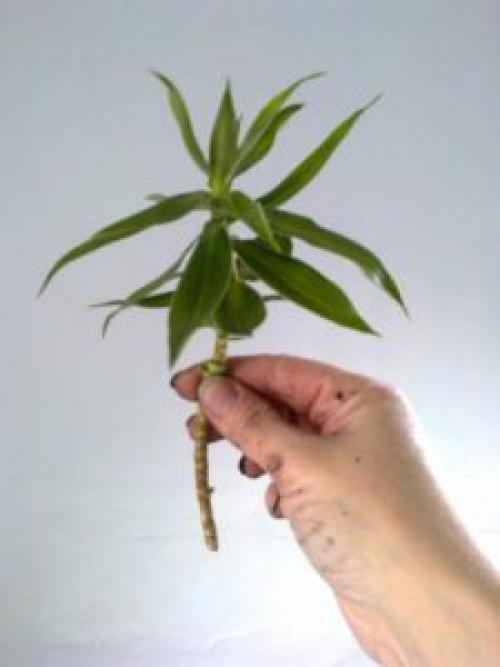

Important! When working with any houseplant, it is necessary to use exclusively sharp knives, or razors, which must be sterile. This will reduce the chances of infection of the cuttings.


When choosing a cutting, you need to pay attention to its appearance: it should not have damage to the bark, spots or cracks. So there will be more chances for successful rooting and subsequent growth.
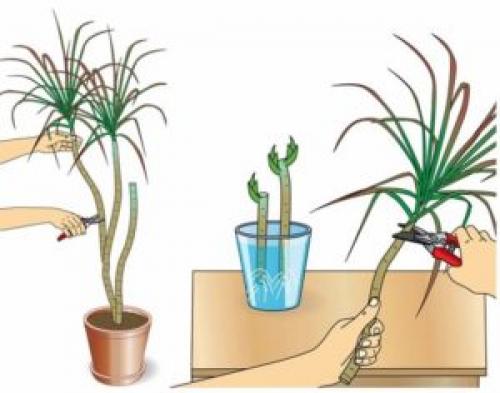

When rooting the top of the dracaena, you must follow some rules.
- The water needs to be changed every two to three days so that bacteria do not develop there, which causes the process to rot.
Dissolve one or two tablets of activated charcoal in water to prevent contamination.
When rooting in sand or vermiculite, it only needs to be slightly moistened.
The container with the appendix must be placed in a bright place, while avoiding the sun's rays.
It is very important not to root the planting material directly into the soil. This can lead to rotting. For these purposes, it is better to take an inert composition, for example, perlite or sand.
A greenhouse for a plant, made of a transparent plastic container, must be ventilated every day, gradually increasing the time from ten minutes to an hour, so that the plant gets used to home conditions.
It is recommended to spray the leaves of the planting material with a special composition in which fertilizer for palm trees is dissolved.
By following these guidelines, it is quite easy to grow a mature plant from the top.
When is it advisable to prune the roots
To shorten the roots of a palm tree just because they are too long is also strongly discouraged. The palm tree reacts very painfully to transplantation at any age, in mature it especially does not tolerate any interference with its root system.
The plant is transplanted more often by transshipment into a more spacious vessel with the addition of fresh nutritious soil mixture, or the top layer of the earthen coma is changed, removing the exhausted one and filling in a new one. After pruning the roots, the palm tree can be under stress for a long time, not grow, often does not recover from this procedure, withers and eventually dies.
However, sanitary pruning of damaged or dead roots found during palm transplantation is necessary. It should be produced with a sharp disinfected instrument, the places of cuts must be sprinkled with charcoal powder. If there is some other cause of damage to the root system - pests or diseases, the plant should be treated with appropriate chemicals.
Choice of tools and protective equipment
If trimming is really necessary, you need to decide on the right tool. There are many suitable options, the best of which is chosen based on the size of the branches and the tree as a whole.
So, you can use:
- A knife with a serrated edge. It is ideal for pruning branches that are less than 2.5 cm in diameter and can also be used to remove flower stalks.
- Large pruning shears or scissors. Thanks to them, it is easy to remove large branches with a diameter of more than 2.5 cm.
- Hand saw. It will allow you to easily get rid of thick and large branches.
- Chainsaw. It is the last possible option, thanks to which you can get rid of the thickest and largest branches.
If pruning a large palm tree that grows in the garden is intended, then equipment may be needed to reach the top of the plant.Depending on the height of the flower, you can use a stepladder or stool, a ladder or even an aerial platform.
Don't forget to take care of your protection. In particular, safety goggles and garden gloves should be used. Keep in mind that there are sharp thorns along the edges of palm leaves, so hand cuts are not uncommon. And if the chosen tool is a saw or pruner, then there is a high probability of getting debris in the eyes.
If necessary, you can consult with experts. They will advise you on how to properly trim for the best results.
Description of the plant
- beautiful flower. It has many shapes that differ in appearance. The stems of young plants cannot branch very much; they are covered with either lanceolate leaves or leathery ones. Their color is monochromatic green and variegated, on which there are stripes of different widths of white or pink. The stem gradually begins to grow stiff and bare over time. The lower leaves are dropped every two years. As a result, after some period, the leaves will be located only in the upper part.
The root system of the plant is clavate. There is no overgrowth on it. Dracaena crown growth is slow. Life expectancy is long. It is rare to see a blooming dracaena at home. Indoors, it practically does not bloom. Well, if you happen to be lucky, you will see a fragrant panicle of white or pink flowers.
How to branch dracaena
For the stem of the plant to release additional shoots, a standard pruning procedure must be followed. The main thing is to follow all the rules:
If the plant has already been pruned before for the purpose of branching, pruning should be done again to form elongated shoots. To do this, you need to cut off the elongated shoots as accurately as possible, and shorten the stems by 30 cm, and root the cut tops.
To decorate the trunk, you can use multi-level pruning, you must not forget about the processing of the sections, for which not only paraffin is used, but also crushed charcoal. The use of drugs to stimulate growth is allowed to speed up branching.
After the cutting procedure and the processing of the sections have been carried out, it is necessary to fix wet moss around the trunk under the cut, cover it with a film and fix it. Place the plant in a well-lit place for a month.
For good germination of new shoots, the moss is not removed, and the plant is regularly watered, avoiding stagnation of moisture in the pot. To do this, it is better to use watering in a pan, the main thing is that the plant is in the light, then the side shoots will quickly begin to germinate. After the shoots appear, the film can be removed, and the dracaena can continue to grow without additional manipulations.
Some leaves may dry out, but only a few will continue to grow, shoots may appear anywhere in the trunk and the plant will acquire a multi-tiered crown. Such pruning is carried out throughout the entire life cycle of the dracaena to maintain its decorative shape.
Dracaena grows at home for up to 15 years. In this case, the evergreen plant grows with its top, and the lower part of the stem is bare. The leaves, having worked for a little more than a year, gradually dry up, leaving a scar on the stem. How to prune dracaena to get side shoots? The plant allows you to create new forms by shortening the shoots.
How to grow a beautiful dracaena.
It's not difficult to make friends with dracaena: its appearance will show what your favorite is missing. You may be intimidated by the yellowing leaves along the bottom of the trunk, which the dracaena gradually sheds - this is a slow natural process of flower life. The foliage remains only at the top, and the trunk is bare. But the brown tips and edges of the leaves will already signal trouble.Test the dracaena habitat for dry air, strong drafts or occasional watering: the ground at the roots should never dry out, and all dracaena need to be sprayed regularly. For the same reason, brown spots may appear over the entire surface of the leaf. But at the same time, readers of MirSovetov need to remember that in winter, watering is slightly reduced, otherwise the plant may die. The optimal watering regime is once a week, in the summer - two. Strong waterlogging of the soil is also detrimental, as it leads to stagnation of water in the roots. Based on practice, if the apartment is not too dry, then the dracaena will feel great even without frequent spraying. Unless, in the summer heat, a shower certainly does not hurt. Although the leaves must be either sprayed or wiped off - from dust. Dracaena are one of the lovers of a small shade, and from exposure to the bright sun, dry spots on the leaves can occur: the leaves are corny burning. However, if the sun shines through your windows all day long, then most likely the dragon tree will be comfortable there. My two trees stood in different rooms for about a year. One on a window with enough light, and the other on a window with blinds, which were regularly opened completely in the morning, but, nevertheless, the shadow remained. Both of them grew beautifully with an equal regime and even let out side shoots. But only after a while I drew attention to how they differ sharply: what was in the light had a powerful crown and wide strong leaves, and the one in the shade had much narrower foliage and looked frail, besides too thick. The difference was also in the pale color. So you shouldn't put the dragon in a dark corner of the room. Unless the whole room is completely flooded with light. Temperature can also harm the plant: the threshold is + 12 ° C in winter. A large drop can cause the death of the dracaena. Soft twisted leaves and, moreover, with brown edges will tell that it is freezing. A plastic window is quite suitable, even on cold winter nights the tree does not have to be removed from the windowsill. Planting, reproduction and transplanting Dracaena are transplanted in the spring, about once every two years. The signal for transplanting will be the size of the roots, which completely fill the pot. Therefore, the plant should be transplanted into a larger pot so that there is 3 cm between the roots and the edge of the container. The composition of the earth mixture is suitable: in an equal ratio of turf + leafy earth + compost + sand + peat. Although dracaena live wonderfully in universal purchased soil, which is much easier in our busy life, when there is not enough time for anything. When planting dracaena, you will definitely need good drainage, which will not allow water to accumulate at the roots. Also, the flower will not refuse fertilizers, which are recommended to be applied 2 times a month. But in a simplified version, I do it only once with the liquid fertilizer "Humisol", and then not regularly. The results are excellent. The plant propagates by air layers, apical cuttings and stem segments, and the dragon tree also by seeds. It is accepted without problems: I have never done complex manipulations with sand and covering under glass - in my opinion, with its properties, this is completely superfluous, since dracaena is not at all the plant that you need to tinker with for a long time. "Palm" is simply stuck into the damp ground and watered regularly, without the stage of root germination.


Do I need to cut the pandanus
In terms of pruning, pandanus is closer to real palms than to false ones. It cannot be cut in the same way as dracaena or yucca. The dried tips of the leaves are in no hurry to remove, and if it is necessary to do this, then the living tissue on the leaf blade is not affected, leaving approximately 1-2 mm of dead area on the border with a healthy leaf.
In mature specimens, aerial roots are formed at the base of the stem. In no case should they be cut off either.If children are formed on the side of the trunk, they are separated only after they have grown their own roots at least 5 cm long.They are not cut, gently broken off by hand, dried for a while and rooted in a constantly moist peat-sand mixture at a temperature of at least 20 degrees heat.


How to transplant dracaena after purchase
Regarding the transplant of dracaena after the purchase, the opinions of florists differ. Some of them propose to postpone this process for 2-3 weeks to acclimatize the plant in new conditions. Others consider it correct to transplant immediately after purchase. Still others do not see the need for this procedure at all.
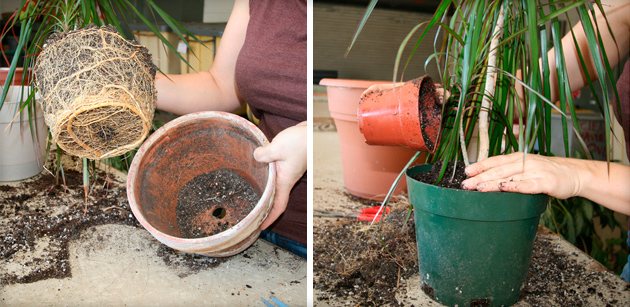

You can do without transplanting if the plant looks healthy, its dimensions correspond to the width of the pot, and the soil is not a transport substrate and is not depleted. In this case, it is enough to carry out transshipment into a new container, waiting for spring.
You cannot do without a transplant when, at a plant height of 40 cm, the width of the pot is less than 15 cm.If the dracaena was sold in soil based on peat, this manipulation should not be postponed. Otherwise, the roots may rot. It is necessary to free them completely from the existing substrate and plant them in new soil. You can not take land on the personal plot, as it can be infested with pests.
When dracaena requires pruning


There are several reasons why pruning of dracaena is necessary:
- Preservation of the compactness of the plant;
- Preservation of the decorative appearance;
- Sanitary reasons.
If the palm tree is too tall, it can break.
... To prevent this from happening, they carry out its primary pruning.
It is advisable not to allow the dracaena to be pulled out strongly and cut it off when its height is 30-40 cm.
The stem is cut to the required height to maintain a compact size. If the plant breaks down, it is still necessary to cut its trunk according to all the rules, since without this the dracaena may die.
Sometimes already branched dracaena grows and becomes ugly
... Ugly growing shoots may appear on it. In this case, formative pruning is necessary, which will give the plant the desired appearance.
If the dracaena is sick, and its shoots dry or rot, it is urgent to carry out sanitary pruning, removing all diseased parts of the plant.
After pruning, the plant loses its attractive appearance for a long time. However, this procedure is the only method that allows you to achieve branching of most varieties of dracaena.

